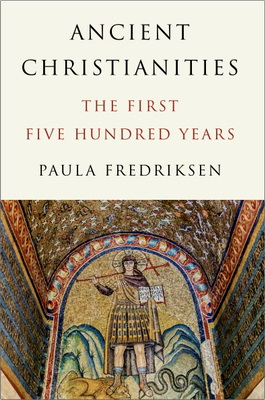
Fredriksen – Ancient Christianities

This book tells the story of the origins and development of ancient Mediterranean Christianity up to the fifth century in the post-Roman West. It is easier to see when this story ends than when it begins.
How odd, the reader might think. The story obviously begins with Jesus and then passes to the apostles, thence to Paul. That is the implication of the order of the books in the modern New Testament: first the four Gospels, then the Acts of the Apostles, and then Paul’s letters.
The New Testament, however, as a closed and stable collection of texts, is the product of the fourth century. Its twenty-seven writings represent but a small selection of the many gospels, letters, acts of apostles, and books of revelations that circulated in the years between the mid-first century (from which we have our earliest evidence, the letters of Paul) and the establishment of an imperial church in the course of the fourth. The impression of the origins and development of Christianity given in the New Testament is the construction of these later, fourth-century initiatives, a story retrospectively generated. If we use our peripheral vision, if we look to other noncanonical and paracanonical texts, if we consider the materials available through archaeology, and if we trace the lively interactions of all these data with the wider Mediterranean world in which they were embedded, a diferent, richer, and much less linear story emerges.
My goal is to introduce the reader to the complexities and ambiguities, the ironies and surprises, the twists and turns of this richer story. Rather than follow a temporal arc from Jesus to the late empire—a tale first told by Eusebius and repeated, with variations, by many modern textbooks on Christian origins—it is organized thematically. Each chapter surveys materials from these five centuries. This thematic presentation avoids the impression of linear development that a single temporal arc can convey.
The story of the evolution of Christianity—really, of Christianities— involves a large cast of characters, superhuman as well as human: not only theologians, bishops, and emperors, but also gods and demons, angels and magicians, astrologers and charismatic wonder- workers, idioyncratic ascetics and aristocratic patrons and millenarian enthusiasts. All these played their part in the development of what began as and would always remain a vigorously variegated form of biblical religion.
Paula Fredriksen – Ancient Christianities – The First Five Hundred Years
Princeton: Princeton University Press, 2024. – 289 p.
ISBN 9780691157696 (hardback)
ISBN 9780691264974 (ebook)
Paula Fredriksen – Ancient Christianities – Contents
Preface
Maps
1. The Idea of Israel
The Second Temple Matrix
Israel among the Nations
The Spread of the Gospel
Jews and Jesus
Who Is Israel?
Rhetorical “Jews” and Historical Jews
2. The Dilemmas of Diversity
The War of Words
The Knowledge of God
Strategies of Control
Neither Male nor Female
Mani and Pelagius: The Politics of Orthodoxy
Etiologies of Error
3. Persecution and Martyrdom
Celestial Diplomacy
Pre-Christian “Christian” Persecutions
The Matrix of Martyrdom
Spectacles of Death
Turning Points
The Communion of Saints
Rhetoric of Martyrdom
4. The Future of the End
The Second Coming
Taming the Apocalypse
Apocalypse Now
Different Endings: Heaven and Hell
5. Christ and Empire
Theology
Divine Sonship
Constantine, Nicaea, and After
Julian
Continuing Controversies
The Imperial Church
6. The Redemption of the Flesh
Ascetic Preludes
The Ascetic Laboratory
Ascetic Alternatives
Marriage, Celibacy, and Virginity
The Body, the Soul, and the Flesh
Ideology and Identity, Rhetoric and Reality
7. Pagan and Christian
The Mediterranean Matrix
Demons, Rituals, and “Magic"
Neutralizing Pagan Tradition
The Christian Capital
The “Second” Church
Identities and Boundaries
Conclusion
Acknowledgments
Timeline
Glossary
Supplementary Reading
Sources Index
Names and Places Index
Subject Index




Комментарии
Пока нет комментариев. Будьте первым!